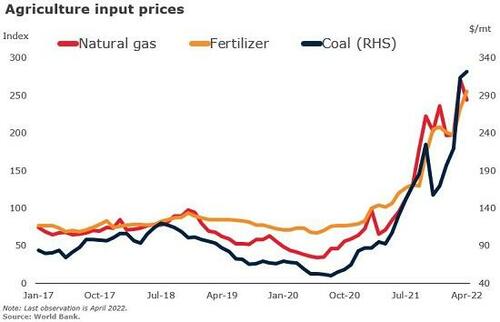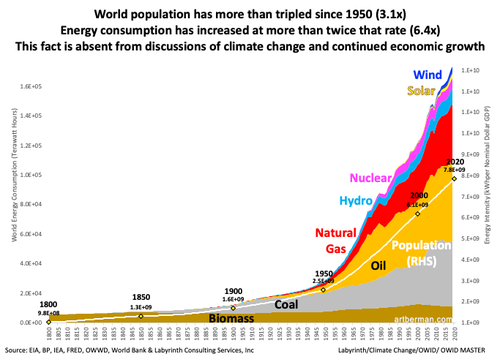- Home
- Members
- I'm New-What Can I Do?
- Past, Present and Future
- Adverse Health Effects
- Freedom to Fascism film
- NRCM's CO2 - Analysis
- Ordinances/Moratoriums
- Wildlife
- Empty Economics
- Maine PUC
- Maine's Wind is Poor
- The UMPI Cover Up
- My Page
- About Us
- Contact Public Officials
- Is This ME CORRUPTION?
- Gov's Wind Task Force
- Mass vs Maine CO2
- Tourism/Property Values
- Transmission etc.
- Miscellaneous Topics
- Videos
- Photos
- BLOGS
- Supposed Enviro Groups
- Investigate Them
- New Tab
- EUT & ENR Audio Links
The End of The "Growth" Road
The End of The "Growth" Road
https://www.windtaskforce.org/profiles/blogs/the-end-of-the-growth-...
Authored by Charles Hugh Smith via OfTwoMinds blog,
The End of the "Growth" Road is upon us, though the consensus continues to hold fast to the endearing fantasy of infinite expansion of consumption.
This fantasy has been supported for decades by the financial expansion of debt, which enabled more spending which pushed consumption, earnings, taxes, etc. higher.
All the financial games are fun, but "growth" boils down to an expansion of material consumption: more copper mined and turned into wire, which is turned into new wind turbines, housing, vehicles, appliances, etc.
There are three problems with the infinite expansion of consumption "growth" paradigm.
1. Almost everyone in developed economies already has everything. The "solution" is planned obsolescence and the obsessive worship of marketing, which seeks to manipulate "consumers" into buying stuff of marginal utility that they don't actually need, and buy it with credit cards. This is sold as "fashionionable."
The reality is, many consumer goods are of far lower quality than previous generations of products and services. Some of this can be attributed to lower quality control and the relentless pressure of globalization to lower costs, but it's also a systemic expansion of planned obsolescence: product cycles, low-quality components, designs intended to be unrepairable, etc., have all been optimized for the LandFill Economy, where products, that once lasted for decades, are now dumped in the landfill after a few years of service.
As for recycling all the broken stuff--that's another endearing fantasy.
Bright Panels, Dark Secrets: The Problem of Solar Waste: Generating....
The purchase of "fashionable" replacements and marketing gimmicks are the only real driver of "growth" in developed economies.
Life is not being enhanced with better quality or utility; it's supposedly being enhanced by "new" stuff, the only benefit of which is that's it's "new." The claimed benefits are marginal.
2. Those who could actually use more stuff don't have any money.
China's unprecedented development enabled 500 million people, who previously didn't have the earnings, or credit, to buy vehicles, high-rise flats, etc., acquired the income and credit to buy all the middle class goodies. This immense expansion of the global middle class boosted the global economy for 30 years.
But the rest of the developing world has a harder time duplicating the staggering flood of capital into China that funded its transition into "the workshop of the world."
Global corporations might be able to sell snacks and soda and cheap mobile phones to developing economies, but vehicles and high-rise flats--those require expansions of earnings, capital flows and credit that cannot be generated by financial magic.
3. The easy-to-get materials needed to build another billion vehicles, high-rise flats, etc. have been extracted.
While the faithful await new technological miracles that will keep the "growth" system expanding forever, those tasked with actually building the new techno-wonders are looking at real-world limits and costs.
Read these two twitter threads for a taste of reality:
COPPER redux: I live near one of the largest copper mines on earth (Kennecott Utah Copper - KUC). I helped manage a smaller copper mine for 8 years. Observation: Wind/Solar/Battery Proponents and ESG bean-counters are completely out of touch with copper mining and production.
The logic of "growth" is to consume more materials, not less.
Consider the premier consumer product globally, the automobile.
We're constantly told the value of advancements in safety and comfort are the drivers of higher vehicle prices, but the reality is the advances that mattered occurred in the 1970s.
Since then, vehicles have become much larger and heavier, consuming more resources for marginal gains.
My 1977 Honda Accord (built 45 years ago) was a considerably different vehicle from the 1962 Dodge Dart my Mom drove. It had far better fuel efficiency, far more power per cubic inch of engine displacement, and was far safer and more comfortable. The same can be said for the modest-sized 4-cylinder Toyota pickups we drove for work.
The modern versions of this car and truck are far larger, heavier and consume far more resources than previous models.
If we scrape away the marketing mind-tricks, we would conclude the 45-year old vehicles were far more environmentally sound than the bloated modern versions, and the supposed advances (rear cameras, bluetooth sound systems, etc.) are either marginal or annoyances.
I looked through a Toyota Prius manual a few years ago. The majority of the thick book addressed the convoluted, complex sound system.
Issues such as why the starter battery went dead, if the car wasn't used constantly were unaddressed.
Electric vehicles and hybrids use far more of the planet's resources than simple ICE (internal combustion engines) vehicles, and they don't last as long as their heavy, costly batteries must be replaced long before the basic ICE vehicle reaches the end of its useful life.
Only an inconsequential percentage of lithium-ion batteries are recycled, and regardless of rah-rah marketing claims to the contrary, this isn't going to change.
The environmentally sound approach would be to make vehicles that were radically lighter, less powerful, more efficient and slower.
We need vehicles that get the equivalent of 200 miles per gallon of fuel (or electrical charge) and last 20 years without major overhauls, battery replacements, etc.
But the logic of marketing and debt expansion demands bigger, heavier, more complex, and more costly everything, and the replacement of everything sooner rather than later.
Only if we consume and squander more real-world resources can we continue running the marketing / planned obsolescence / expanding debt machine toward the goal of infinite "growth."
Marketing and debt are not substitutes for real-world limits.
A great many people are enamored of techno-promises of limitless energy, etc., but they don't look at the vast material consumption needed to build and maintain techno-wonders, such as fusion reactors (incomprehensibly complex), nuclear reactors (huge, complex plants that take years to build) or the mining operations needed to dig up and process all the copper, uranium, bauxite, etc. that all these techno-wonders require in the real world.
We've reached the end of the "growth" road in which the expansion of marketing and debt magically increase the materials we can consume.
Debt and marketing have their own limits, and our reliance on them has generated second-order effects few understand.
The road ends, and the trail beyond is narrow, rough and unmarked.
Those who are deaf to marketing and debt and attuned to self-reliance will do just fine.
Everyone caught by surprise that the infinite road actually has an end will face a bewildering transition.
U.S. Sen Angus King
Maine as Third World Country:
CMP Transmission Rate Skyrockets 19.6% Due to Wind Power
Click here to read how the Maine ratepayer has been sold down the river by the Angus King cabal.
Maine Center For Public Interest Reporting – Three Part Series: A CRITICAL LOOK AT MAINE’S WIND ACT
******** IF LINKS BELOW DON'T WORK, GOOGLE THEM*********
(excerpts) From Part 1 – On Maine’s Wind Law “Once the committee passed the wind energy bill on to the full House and Senate, lawmakers there didn’t even debate it. They passed it unanimously and with no discussion. House Majority Leader Hannah Pingree, a Democrat from North Haven, says legislators probably didn’t know how many turbines would be constructed in Maine if the law’s goals were met." . – Maine Center for Public Interest Reporting, August 2010 https://www.pinetreewatchdog.org/wind-power-bandwagon-hits-bumps-in-the-road-3/From Part 2 – On Wind and Oil Yet using wind energy doesn’t lower dependence on imported foreign oil. That’s because the majority of imported oil in Maine is used for heating and transportation. And switching our dependence from foreign oil to Maine-produced electricity isn’t likely to happen very soon, says Bartlett. “Right now, people can’t switch to electric cars and heating – if they did, we’d be in trouble.” So was one of the fundamental premises of the task force false, or at least misleading?" https://www.pinetreewatchdog.org/wind-swept-task-force-set-the-rules/From Part 3 – On Wind-Required New Transmission Lines Finally, the building of enormous, high-voltage transmission lines that the regional electricity system operator says are required to move substantial amounts of wind power to markets south of Maine was never even discussed by the task force – an omission that Mills said will come to haunt the state.“If you try to put 2,500 or 3,000 megawatts in northern or eastern Maine – oh, my god, try to build the transmission!” said Mills. “It’s not just the towers, it’s the lines – that’s when I begin to think that the goal is a little farfetched.” https://www.pinetreewatchdog.org/flaws-in-bill-like-skating-with-dull-skates/
Not yet a member?
Sign up today and lend your voice and presence to the steadily rising tide that will soon sweep the scourge of useless and wretched turbines from our beloved Maine countryside. For many of us, our little pieces of paradise have been hard won. Did the carpetbaggers think they could simply steal them from us?
We have the facts on our side. We have the truth on our side. All we need now is YOU.
“First they ignore you, then they laugh at you, then they fight you, then you win.”
-- Mahatma Gandhi
"It's not whether you get knocked down: it's whether you get up."
Vince Lombardi
Task Force membership is free. Please sign up today!
Hannah Pingree on the Maine expedited wind law
Hannah Pingree - Director of Maine's Office of Innovation and the Future
"Once the committee passed the wind energy bill on to the full House and Senate, lawmakers there didn’t even debate it. They passed it unanimously and with no discussion. House Majority Leader Hannah Pingree, a Democrat from North Haven, says legislators probably didn’t know how many turbines would be constructed in Maine."
https://pinetreewatch.org/wind-power-bandwagon-hits-bumps-in-the-road-3/
© 2025 Created by Webmaster.
Powered by
![]()


You need to be a member of Citizens' Task Force on Wind Power - Maine to add comments!
Join Citizens' Task Force on Wind Power - Maine